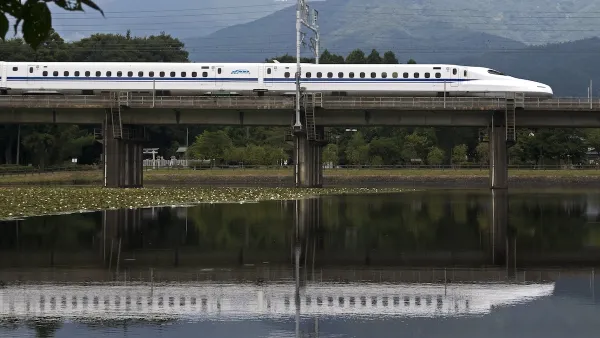UC Irvine student Cristi Lopes is writing software for "SkyTran", a virtual high-speed train based in Second Life. The virtual world will actually serve as a useful simulator for the real thing.
"Her software keeps SkyTran's virtual cars from getting into virtual collisions at virtual interchanges of virtual tracks. After the control software is ready in SL, her plan is to transfer it to a real-world version of SkyTran, proposed by the Irvine-based transportation company Unimodal Inc. Sounds unbelievable but it's true. SL is fast becoming the simulation tool for engineering design. Lopes, who is an associate professor of informatics at the Bren School of Information and Computer Sciences at UCI, discovered that the simplified physics of Second Life are close enough to the physics of the real world for Second Life to be used as an inexpensive simulation tool by small- to medium-sized companies.
It's a low-cost alternative to the sophisticated simulation programs in use by industrial designers at big-bucks enterprises such as Nasa and the military, as well as Boeing and other aerospace contractors. The virtual version of SkyTran has already been useful in addressing urban-planning issues, such as demonstrating how close the tracks could be to buildings and vegetation without making passengers uncomfortable. Unimodal also concluded that SkyTran's express track shouldn't run directly above the loading platform, because that setup looked as if it would make passengers uneasy. Not only were human-machine interface issues identified early by employing Second Life for engineering design, but also the algorithm used to control the virtual SkyTran cars can be migrated for use to run the real-world SkyTran system. This migration is feasible because Second Life physics mimic physics in the real world."
FULL STORY: You've got a fast car: mass transit goes live in Geekland

Planetizen Federal Action Tracker
A weekly monitor of how Trump’s orders and actions are impacting planners and planning in America.

San Francisco's School District Spent $105M To Build Affordable Housing for Teachers — And That's Just the Beginning
SFUSD joins a growing list of school districts using their land holdings to address housing affordability challenges faced by their own employees.

The Tiny, Adorable $7,000 Car Turning Japan Onto EVs
The single seat Mibot charges from a regular plug as quickly as an iPad, and is about half the price of an average EV.

San Diego Votes to Rein in “Towering” ADUs
City council voted to limit the number of units in accessory buildings to six — after confronting backyard developments of up to 100 units behind a single family home.

Texas Legislature’s Surprising Pro-Housing Swing
Smaller homes on smaller lots, office to apartment conversions, and 40% less say for NIMBYs, vote state lawmakers.

Even Edmonton Wants Single Staircase Buildings
Canada's second most affordable major city joins those angling to nix the requirement for two staircases in multi-family buildings.
Urban Design for Planners 1: Software Tools
This six-course series explores essential urban design concepts using open source software and equips planners with the tools they need to participate fully in the urban design process.
Planning for Universal Design
Learn the tools for implementing Universal Design in planning regulations.
Borough of Carlisle
Smith Gee Studio
City of Camden Redevelopment Agency
City of Astoria
Transportation Research & Education Center (TREC) at Portland State University
City of Camden Redevelopment Agency
Municipality of Princeton (NJ)





























